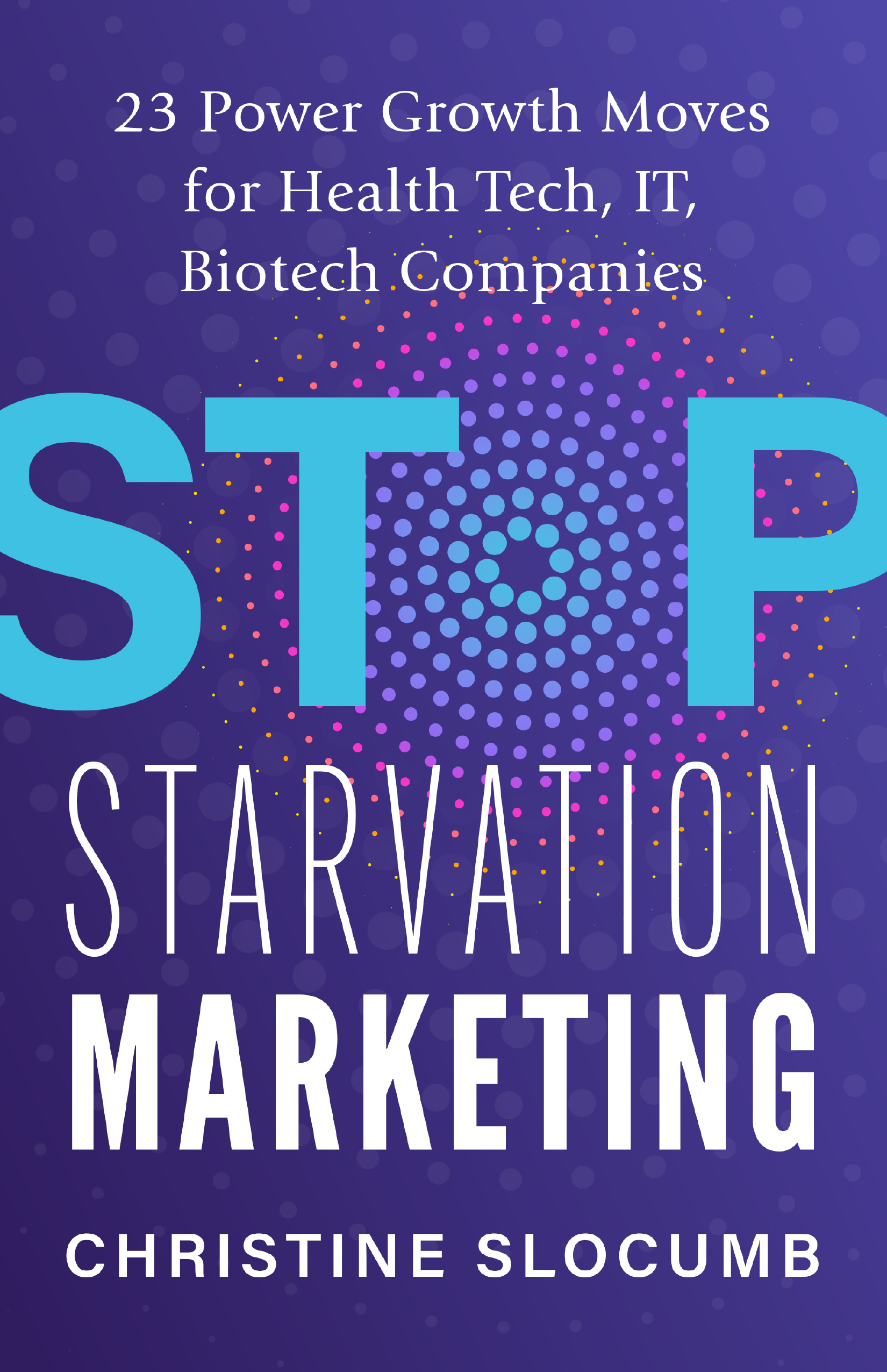Companies, even highly technical business-to business (B2B) firms, must develop messaging that connects emotionally with their prospects. Great messaging should provoke, entertain, and inspire, advises B2B marketing expert Christine Slocumb.

“Emotion drives 80 percent of decision-making; data drives the remaining 20 percent,” says Slocumb, author of Stop Starvation Marketing: 23 Power Growth Moves For Health Tech, IT, Biotech Companies (2023, Indie Books International).
“Leadership, legal departments, and regulatory reviewers often kill content ideas that focus on emotion, humor, or storytelling,” says Slocumb. “They want to play it safe and not offend anyone. The result is sterile content that doesn’t connect or convert but only takes up space.”
Slocumb has a master’s degrees in both engineering and business. Her professional career spans 30 years of marketing, business development, and product management experience in various tech companies, from start-ups to Fortune 50 firms.
Since founding Clarity Quest, the award-winning marketing agency, in 2001, Slocumb has worked with technology, life sciences, and healthcare firms on marketing strategy, business planning, and marketing implementation.
“Make sure your content isn’t putting people to sleep,” advises Slocumb. “Go beyond traditional facts and figures with your content. Buyers, even knowledgeable ones, make purchases on emotion even if they don’t realize it.”
Here are seven ways Slocumb says to build emotion into marketing messages:
1. Begin at the beginning. Share a story of why you started the business or created the product. Simon Sinek, in his groundbreaking book Start With Why, popularized the notion of figuring out your why and then how you’re different and what you do. Origin stories interest people.
2. Incorporate humor. Satire and fun can be used in good taste, even in sensitive situations and industries like health care. “My agency had a healthcare software client that gave humorous awards to medical practices’ billing employees who normally don’t get any love or recognition working from the basement or back offices,” says Slocumb. “They loved the awards, which lightened the tedium of their daily routines.”
3. Use fear. Buyers want to avoid missing out or getting bested by a competitor. “My agency used a demographic targeting technique in which we contacted every health system in a 60-mile radius of a health system that had bought our client’s software.” “When the large marquee hospital saw its tiny competitor had something it didn’t to reduce patient leakage, they were immediately interested to learn more.”
4. Tell a story from a user’s perspective. “Day in the life” stories are very effective. Create an illustrated “before and after” collateral piece or video that shows how you improve the end user’s experience. For example, they may finish their day exhausted and frustrated before using your product but be satisfied and calm once they use it. “My agency successfully used easy-to-digest infographics showing nurses how a new workflow tool could make their jobs easier,” says Slocumb.
5. Take a lesson from Hollywood. Tell the story of how your product slays a big metaphorical monster or turns an underdog into a hero.
6. Communicate data in an unexpected way. Highly technical buyers do respond to facts, but be sure not to bore them. Instead of a simple ROI calculator, consider an interactive online experience that gives users personalized use cases along with typical savings and efficiency data. Without a story, your messaging looks like a pile of data. Data alone won’t move the needle to conversion.
7. Tap into an unexpected sense. Have you ever smelled an apple pie that triggered a long-forgotten memory? While marketing content often triggers visual and auditory senses, consider how to incorporate taste or smell.
Slocumb has experience leading in-house marketing and agency client services teams, developing processes, managing marketing operations, and owning P&L responsibilities. She believes the marketing function must be accountable for producing tangible results and positive ROI.
Slocumb holds eight US patents and is a member of the Forbes Agency Council. On a personal note, she’s an avid paddler and an addicted golfer.
